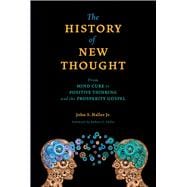
The New copy of this book will include any supplemental materials advertised. Please check the title of the book to determine if it should include any access cards, study guides, lab manuals, CDs, etc.
The Used, Rental and eBook copies of this book are not guaranteed to include any supplemental materials. Typically, only the book itself is included. This is true even if the title states it includes any access cards, study guides, lab manuals, CDs, etc.
In an address delivered at the close of the summer session at Harvard’s School of Theology in 1909, President Charles W. Eliot (1834–1926) identified several characterizations of future religions. First, they would rely less upon authority—both organizational and literary—as a means of ensuring its role in society. Second, there would be less adherence to the personifications of primitive forces such as mountains, fire, and earthquakes as symbols of deities. Third, there would be less reliance on dead ancestors, teachers, and rulers. Fourth, future religious life would not be constructed around personal welfare or safety. Fifth, religions would not be sacrificial or expiatory in nature. Sixth, they would be less anthropomorphic in their representations of God. And seventh, they would be less ascetic and gloomy. He also predicted that concepts of God would adopt the language of modern physics by including such descriptive terms asenergy, vital force, omnipresence,andinfinite spirit.In addition, religion would be monotheistic, indwelling, and immanent in all things, and reject any conception that humans or God might be alienated from the world. Most important, humans would discover God through self-consciousness. There is in each individual, Eliot observed, “an animating, ruling, characteristic essence, or spirit, which is himself.” It was this personality or soul that rallied the body. The religions of the future would no longer approach evil or human pain and suffering as punishment or moral training but as a preventable evil. “Institutional Christianity as a rule condemned the mass of mankind to eternal torment,” he noted. “The new religion will make no such pretensions, and will teach no such horrible and perverse doctrines.” Instead of justice, the religions of the future would emphasize God’s all-pervading love.
Eliot’s address was not just a prediction of religion and spirituality in the future, but an unusually prescient description of New Thought, which, by the start of the twentieth century, boasted some four hundred churches and centers serving approximately a million adherents. By the Second World War, its numbers had swelled to between fifteen and twenty million. Today, estimates are difficult, since a large portion of New Thought’s more secular literature is unattached to any specific church or organization. We may, in fact, be justified in calling New Thought a “secondary religion” whose churched and unchurched adherents profess teachings built on principles centered around healing, self-discovery, and empowerment.
The passage of American metaphysical thinking from Calvinism to New Thought took a circuitous route that began with sober orthodoxy and worked its way through a fashion spread of newly found sciences before turning sympathetically to the appeal of a dogma-free religion as conceived by Swedenborg and temporized by Emerson. Out of their inspiration emerged a school of thinking whose gifted teachers constructed an idealistic philosophy of free spirits searching for a pluralistic community of cooperating minds. Some of these teachers taught a science of mind using the empirical reality of the self to achieve personal and collective growth. For others, it was the more antiquated concept of the soul that asserted itself. In both, however, there was the acceptance of belief, however derived, as the basis for action. In this sense, New Thought became an expression of tolerance, of imagination, and of contentment with life, including its many paradoxes. Having fused together the faith of the seventeenth century, the reason of the eighteenth, and the feeling of the nineteenth, New Thought broke into the twentieth century with what one might call a genuine “Americanism”—a worship of the practical over the theoretical, of self-sufficiency over self-surrender, of instant over delayed gratification, and cash value as the measure of personal success.